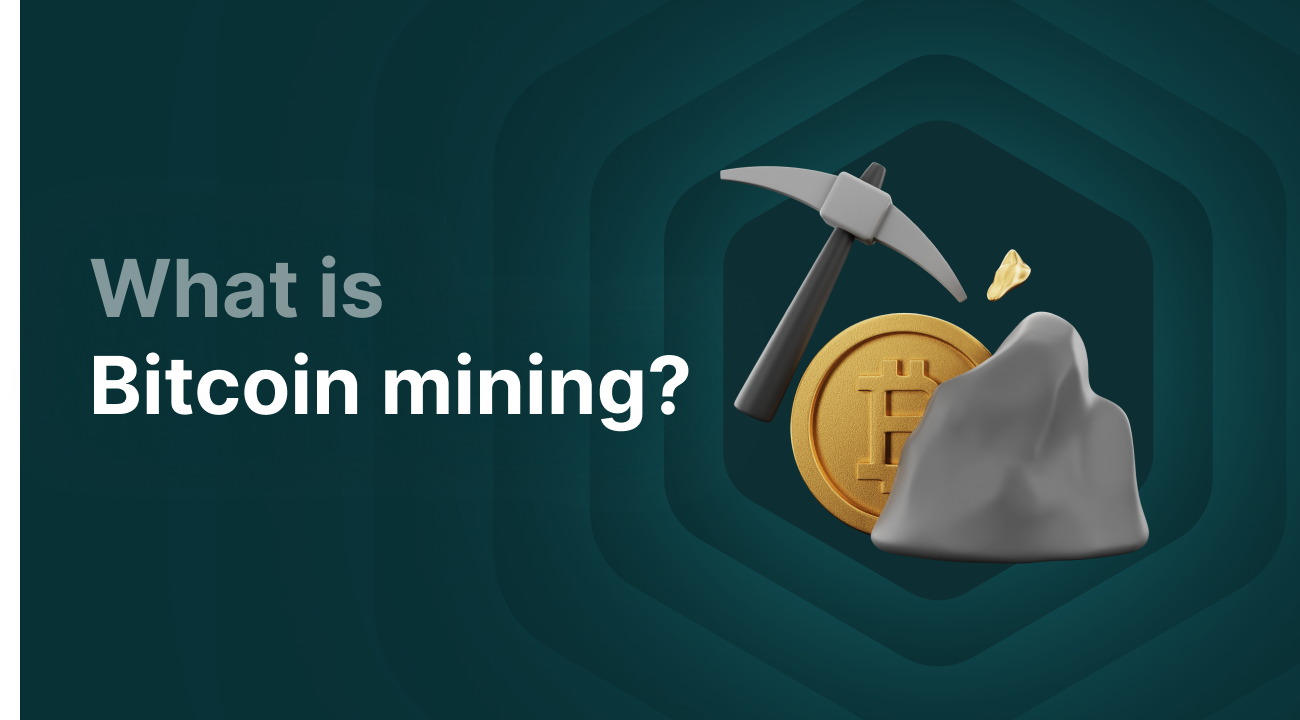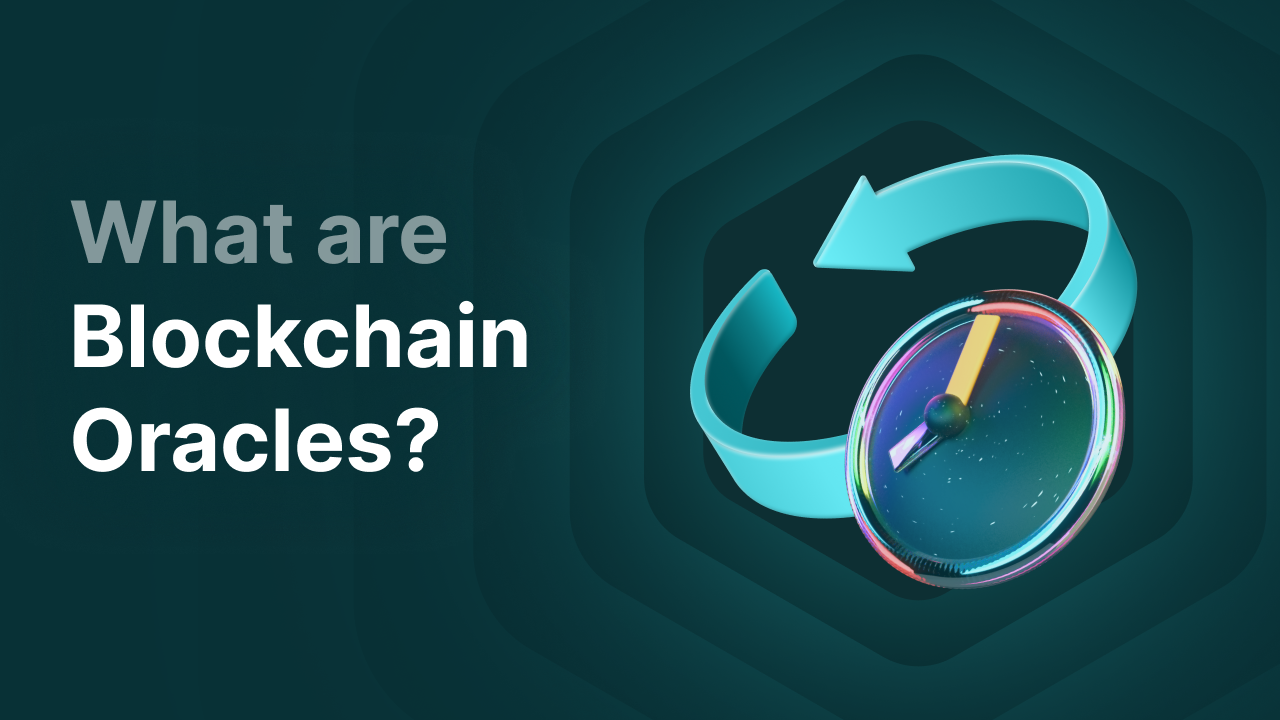What is Bitcoin mining and crypto mining?

What is Bitcoin mining?
Bitcoin mining is the process by which new Bitcoins are created through mining. During the Bitcoin mining process, transactions on the Bitcoin network are verified, validated, and new blocks are added to the network. This is done by a decentralized network of miners all trying to be the first to solve a complex mathematical formula, namely finding the correct hash. This process is called mining. The miner who succeeds first receives a reward paid out in BTC, which is issued by the network when adding a new block. This is called the mining reward. In addition, the crypto miner receives the 'fee' (transaction fees) paid by the executor of a transaction to get priority and have the transaction processed.
Thanks to this process, the blockchain of Bitcoin remains up and running 24 hours a day and keeps the network secure.
The mining process of Proof of Work
Bitcoin uses the Proof of Work (PoW) consensus mechanism. This is an algorithm that enables crypto mining on the blockchain. PoW ensures that the network operates decentralized through specialized computers without the intervention of a third party. Miners all over the world help validate transactions and add new blocks to the blockchain all day long. Miners compete to be the first to add the block by solving complex formulas that require a lot of computing power. The miner who succeeds first receives the mining reward.
Key Takeaways
-
New Bitcoins are created during the mining process, with miners rewarded in BTC.
-
Bitcoin uses the Proof of Work algorithm, where miners solve complex mathematical problems with specialized hardware.
-
Miners ensure Bitcoin transactions are processed correctly and securely without the intervention of a central party.
-
Thanks to the enormous computing power of thousands of miners worldwide, the network is extremely difficult to manipulate.
-
The mining difficulty is adjusted approximately every 2 weeks to ensure one block is added every 10 minutes.
-
Every 210,000 blocks a halving occurs, cutting the block reward in half to create scarcity.
How does Bitcoin mining work?
During the Bitcoin mining process, miners try to solve complex mathematical formulas to find the hash (the correct number) of a block. During this process, they validate unconfirmed transactions collected in the block. When a miner is the first to find the correct solution, meets the network’s conditions, and is approved by other miners (also called nodes), the miner may add the block to the network. As a reward, the miner then receives the mining reward, which is currently 3.125 BTC. The process then starts again.
Specialized and heavy hardware such as ASIC miners is used for Bitcoin mining because the process requires a lot of computing power. As competition on the network increases, it becomes more difficult to mine a new block. The difficulty level rises when competition increases and decreases when competition falls. This way, the network ensures that one block is added every 10 minutes. The difficulty is adjusted approximately every four days (every 2016 blocks). The difficulty is determined by the hashrate (computing power) on the network.
Why is Bitcoin mining necessary?
Bitcoin mining is essential for the functioning of the Bitcoin network. Below are the main reasons why Bitcoin mining is necessary:
-
Transaction validation: Thanks to Bitcoin miners, transactions can be executed and validated in a decentralized manner (without the intervention of a bank). Miners prevent double spending or spending crypto that does not exist. They do this by checking if the Bitcoins exist and belong to the sender. This is made possible by Bitcoin’s open-source and transparent structure. Only when the transaction is correct and successfully placed in a block does it become final.
-
Network security: The network is considered very secure because of the computing power needed to act maliciously. To take control and act maliciously, you must control at least 50% of the computing power (hashrate). Why 50%? At least 50% of the remaining Bitcoin miners must approve the miner’s hash and intent. This is practically impossible, since thousands of computers distributed worldwide are continuously mining new transactions on the Bitcoin network. The more miners active on the network, the more computing power a hacker would need. Additionally, the reward system incentivizes miners to keep mining, keeping the network secure.
-
Creating new Bitcoins: The only way to bring new Bitcoins into circulation is through mining. When a new block is created, new Bitcoins are issued. This happens every 10 minutes for Bitcoin. The maximum number of Bitcoins that will ever be brought into circulation is 21 million. This is fixed in the Bitcoin code and cannot be changed. The mining reward is halved approximately every four years (every 210,000 blocks) during the Bitcoin halving to ensure new BTC are not issued too quickly and to create scarcity. It is expected that the last Bitcoin will be issued in 2140. After that, miners will only earn transaction fees.
Without mining, the Bitcoin network would not be able to function as it does today.
Overview of Executed Halvings and Block Rewards
Is Bitcoin Mining Legal?
In many European countries, Bitcoin mining is allowed as long as there are no laws explicitly prohibiting it. Mining is permitted in countries such as the Netherlands, Germany, France, Spain, and Portugal. However, tax rules and licensing requirements vary by country. Therefore, it is important to research the specific regulations regarding taxes and licenses in each country.
In the United States, Bitcoin mining is also legal, although some states impose restrictions due to environmental policies, as there are concerns about the massive amount of computational power required for crypto mining.
Some countries have previously imposed bans on mining Bitcoin and other cryptocurrencies, such as China, Algeria, and Nepal. Popular countries for large-scale crypto mining include Russia, Kazakhstan, Canada, and Norway. In these countries, mining is generally permitted, but often comes with strict conditions and taxes on things like electricity usage.
Be aware that the laws and regulations regarding crypto mining are constantly changing. Always do your own research to find out whether mining Bitcoin or other cryptocurrencies is legal in your country!
How Can You Mine Bitcoin?
If you want to start mining Bitcoin, there are several ways to do so:
-
Solo mining: You can start mining Bitcoin on your own. You’ll need to invest in equipment such as heavy-duty hardware (ASIC miners). Due to high energy consumption, this method is less profitable than it used to be. Also, the chances of earning the right to add a block are very low.
-
Mining pools: If you want to increase your chances as a small crypto miner, you might consider joining a mining pool. In a mining pool, you combine your computing power with other miners, increasing the chances of mining a block. You then share the earnings with the other members. Payouts are usually distributed based on the computing power (hashrate) contributed.
-
Cloud mining: With cloud mining, you can rent computing power from external data centers. This lowers the barrier to entry since you don’t need to buy expensive equipment. Instead, you rent hashrate from a data center engaged in crypto mining, often via an online platform. The rental typically comes in contract form, such as a one-year term. The provider sends a portion of the earnings to your crypto wallet. Keep in mind that you’re dependent on the provider’s reliability, and there have been known cases of fraud.
-
Start a mining farm: If you have significant capital and want to invest in large-scale Bitcoin mining, you could consider setting up a mining farm. This requires a major investment in hardware, power supply, cooling systems, and security. You’ll also need to choose your location strategically. Cold countries with low electricity costs and stable power supply are ideal. This setup has the potential to generate high profits. However, it comes with risks such as regulatory changes, market volatility, and energy costs.
What Other Cryptocurrencies Can You Mine?
In addition to Bitcoin, there are plenty of other cryptocurrencies that use the Proof of Work algorithm. These cryptocurrencies can also be mined. Examples include:
-
Litecoin (LTC)
-
Dogecoin (DOGE)
-
Bitcoin Cash (BCH)
-
Ethereum Classic (ETC)
What Cryptocurrencies Cannot Be Mined?
Besides cryptocurrencies that are introduced through mining, many coins enter circulation through other means. The most well-known example is cryptocurrencies that use the Proof of Stake (PoS) consensus mechanism.
Examples include:
-
Ethereum (ETH)
-
Cardano (ADA)
-
Polkadot (DOT)
-
Solana (SOL)
-
Tezos (XTZ)
-
Algorand (ALGO)
-
Avalanche (AVAX)
-
NEAR Protocol (NEAR)
-
Cosmos (ATOM)
Not all cryptocurrencies can be mined. Instead, in Proof of Stake, coins are locked (also known as staked). The network uses these tokens to validate transactions and maintain security. This process is called staking. As a reward for staking their cryptocurrency, users receive new tokens. This system doesn’t require heavy hardware, as is the case with Proof of Work, making it much more energy efficient.
Final thoughts
Bitcoin mining forms the foundation of the Bitcoin network. It not only creates new Bitcoins but also validates transactions and secures the blockchain. Thanks to the Proof of Work mechanism and the global effort of miners, Bitcoin remains a reliable, decentralized, and secure network. Although mining requires significant investment and computing power, it is an essential part of the ecosystem. Without mining, Bitcoin simply wouldn’t function as it does today.




